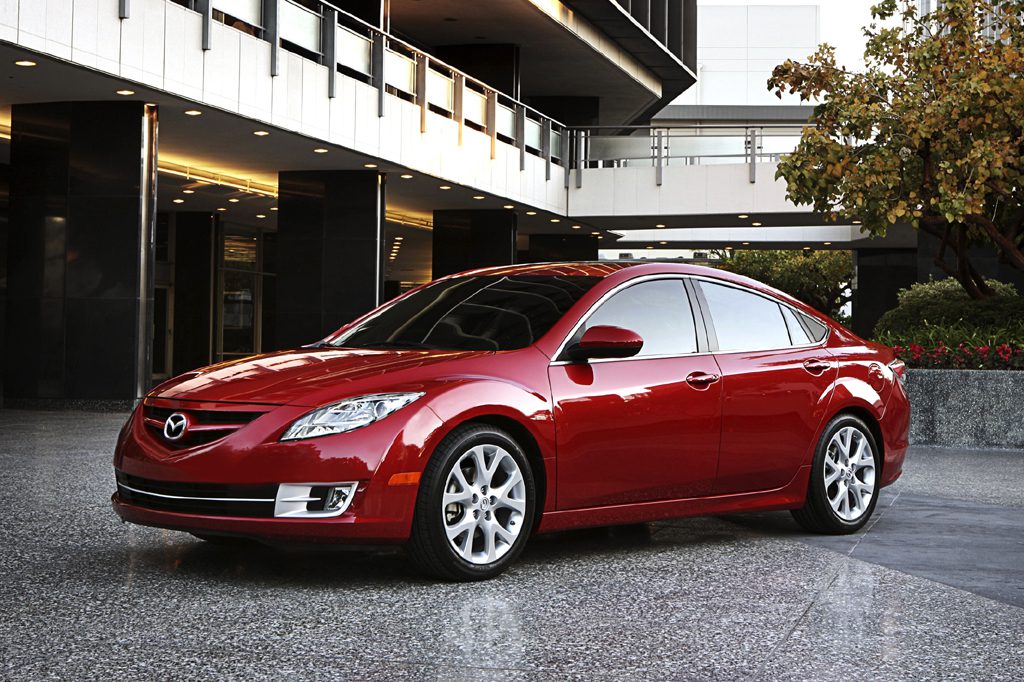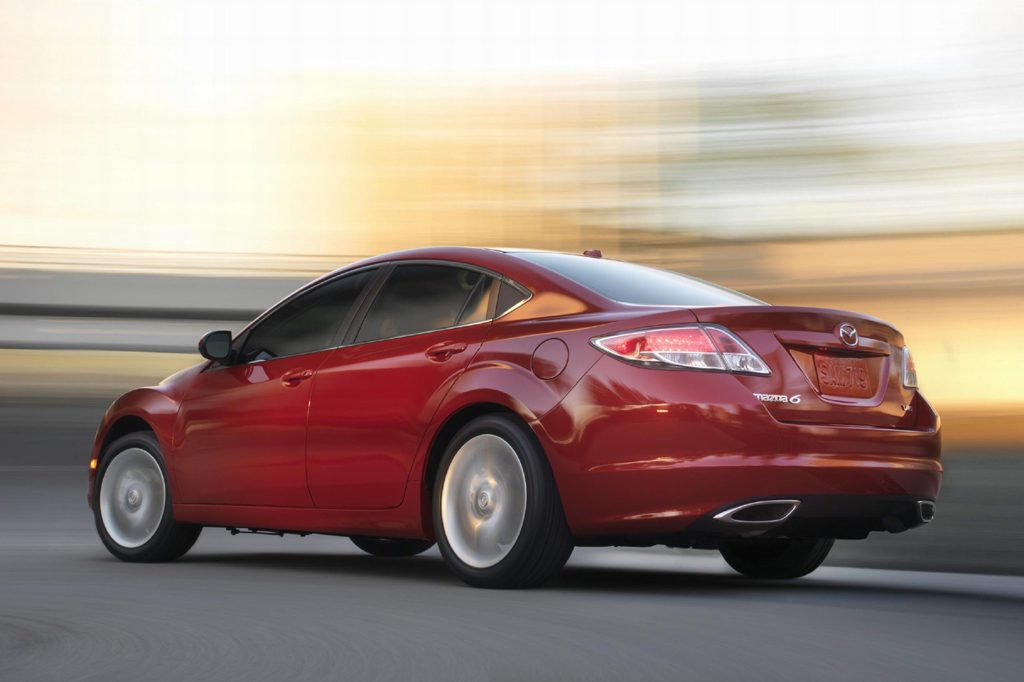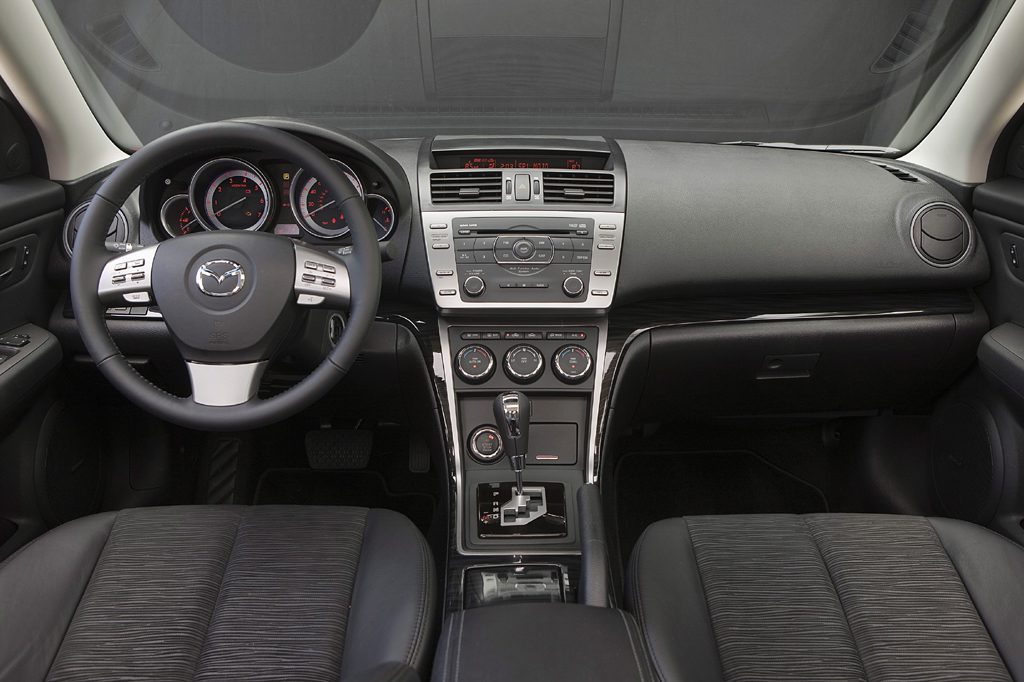| Midsize car; Built in USA |
|
|
| Good condition price range: $4,900 – $21,200* |

2009 Mazda 6 Front

2009 Mazda 6 Rear

2009 Mazda 6 Interior

2009 Mazda 6 Profile
| Pros: |
|
| Cons: |
|
Mazda 6 qualifies as a Best Buy for its newfound style, added passenger space, and fun-to-drive character. We prefer the four-cylinder over the V6, due to those models’ better ride and handling balance, as well as thriftier fuel economy. Though the demise of its wagon and hatchback body styles make it slightly less versatile, solid build quality and class-competitive power make the Mazda 6 a must-see, new or used. Four-cylinder models tend to hold their value better than V6 sedans, so they may be a bit higher-priced on the used-car market.
Overview
As redesigned for 2009, the front-wheel-drive Mazda 6 grew in size, gaining freshened styling and more power. This midsize car now came exclusively as a four-door sedan; the previous hatchback and wagon body styles were discontinued. The 2009 Mazda 6 was about 4 inches longer in wheelbase and 7 inches longer overall than the 2003-2008 generation. Four trim levels were available: SV, Sport, Touring, and Grand Touring. Models with the “i” designation received a new 170-horsepower 2.5-liter four-cylinder engine, which replaced a 156-hp, 2.3-liter four-cylinder. Models with the “s” prefix got a 272-horsepower, 3.7-liter V6 to replace the prior 212-hp, 3.0-liter V6. A six-speed manual or five-speed automatic transmission was offered with the four-cylinder, while the V6 paired with a six-speed automatic. Both automatics had manual shift capability. Standard safety features included antilock brakes, traction control, an antiskid system, front side airbags, and curtain side airbags. Optional equipment included a navigation system, leather upholstery, keyless entry, a sunroof, and a blind-spot monitoring system. Competitors included the Chevrolet Malibu, Honda Accord, and Toyota Camry.
Yearly Updates
| 2010 6 A new trim level joined for 2010. The Mazda 6 lineup now consisted of five trim levels: SV, Sport, Touring, new Touring Plus, and Grand Touring. All except the Grand Touring were available with the 170-horsepower, 2.5-liter four-cylinder engine, designated “i” models. Touring Plus and Grand Touring models could have the 272-horsepower, 3.7-liter V6, earning an “s” prefix and teamed with a six-speed automatic transmission. Four-cylinder SV, Sport, and Touring sedan were available with manual shift or the five-speed automatic. A wireless cell-phone link was standard on Touring Plus and Grand Touring sedans. Grand Touring models gained a moonroof but lost some other equipment. The Mazda 6s Grand Touring also had blind-spot alert, leather upholstery, and heated front seats. A power passenger seat, keyless access and engine start, automatic xenon headlights, and voice-activated navigation were options exclusive to the Grand Touring. |
| 2011 6 The 2011 Mazda 6 got slightly freshened interior styling. |
| 2012 6 There were no noteworthy changes to the Mazda 6 for 2012. |
| 2013 6 The 2013 Mazda 6 was unchanged and saw a very short model year before an all-new 2014 6 debuted. |
